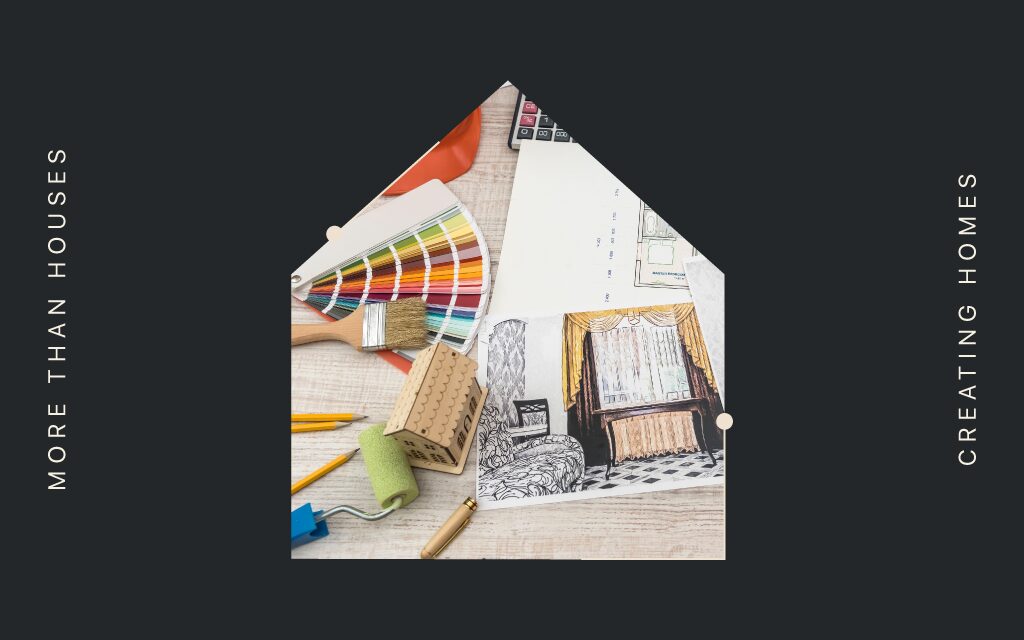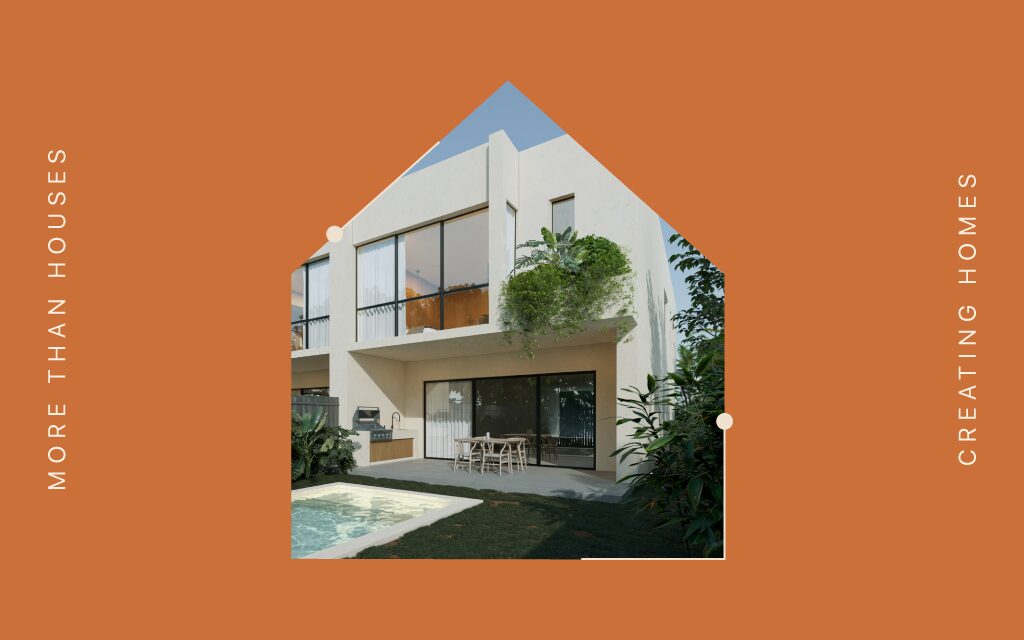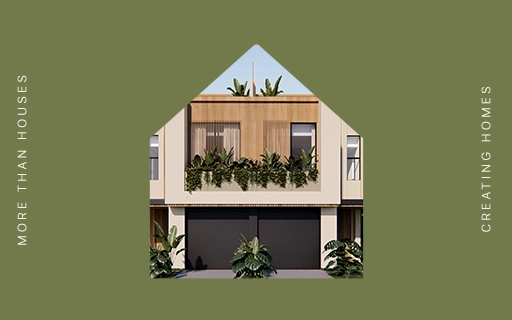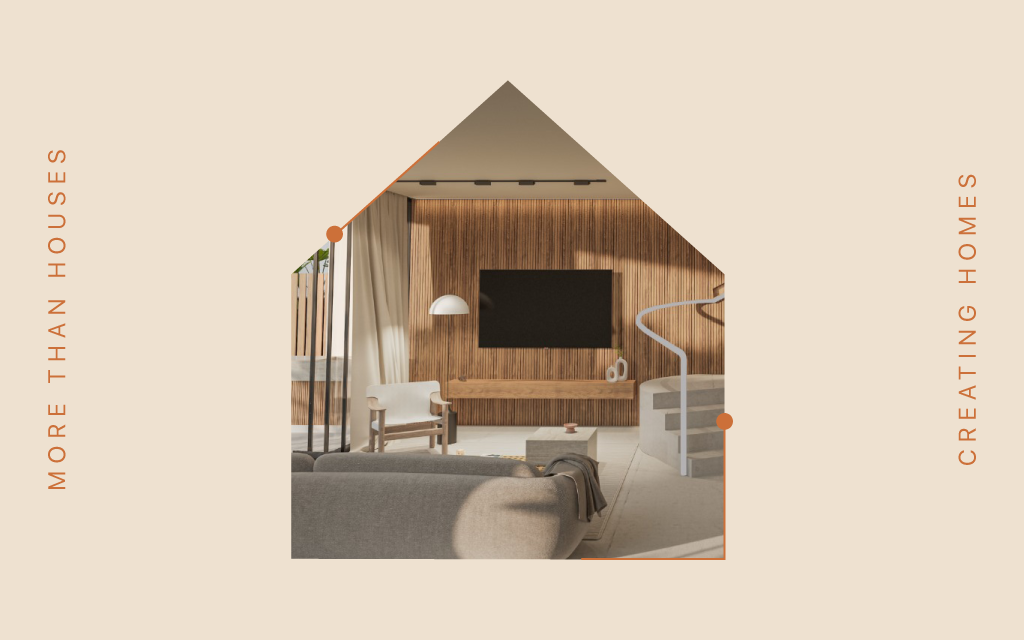Thinking about making new decorations for your place? If you want to avoid some common mistakes (or even fix them if you’ve already made them), read on.
Decorating a home can be a challenging task, but don’t worry because most people go through a phase of wanting to “nest” a place of their own, trying their best to accommodate some things around to make themselves feel at home in a space that reflects their likes and personality. Since that is a universal feeling, it ultimately means that the experiences (and mistakes) of other people have made it easy to identify certain usual patterns that can typically frustrate this process (trust us, we’ve seen it all).
So, how can you avoid the design pitfalls? Stop scrolling down on Instagram or Pinterest for references: with endless inspiration online, it’s easy to make decisions that look good in theory but don’t quite work in the actual space. Here at DCR Homes, we have a great deal of experience when it comes to helping others make their dream housing project a reality, and interior design cannot be off the list. So, we’ve gathered some recommendations that can save you time, money, and frustration. Here are five common decorating mistakes we often see — and the simple fixes that can make all the difference.
1. Choosing the Wrong Paint Color
Many people fall in love with a color they see online or in a store, only to be disappointed once it’s on their walls (because they don’t test it first). Has this happened to you? Don’t worry, you’re not alone. This mistake tops the list because it’s really frequent. And we people can be so stubborn. After buying gallons of paint, we paint a wall only to find that the color doesn’t look good, we keep pressing on hoping it will look better when the paint dries. What’s the result? Wasted time, money and enthusiasm.
What we have learned is that lighting, wall texture, and even the direction your windows face can all drastically alter the way a paint color appears in your home.
The Fix:
Always test paint colors before committing. Buy sample pots and paint large swatches (at least 2′ x 2′) directly on the walls in several spots around the room. Observe how the color looks in morning light, afternoon, and at night with artificial lighting. Don’t rely solely on tiny paint chips or digital renderings: they’re not reliable indicators of real-life color. Additionally, consider the room’s existing furniture, flooring, and decor when choosing a color. A shade that looks stunning in a magazine might clash with your couch or make your space feel too dark.
2. Lack of Cohesion
A beautifully decorated room tells a cohesive story. Unfortunately, many homes end up looking like a patchwork of styles, themes, or color schemes that don’t quite gel (unless that is the person’s style statement, which is so often not the case). This usually happens when people decorate one room at a time without considering the home as a whole—or when they impulsively buy trendy pieces that don’t match their existing style. It can also happen when people are on a budget and buy the pieces of furniture little by little, and when they’ve collected the money for the next item, disregard the chance of respecting the color and pattern they were using.
Another misstep that shows lack of cohesion has to do with color palettes: painting almost every room a different color often leads people to get bored soon and then want to repaint the walls. Lack of cohesion stumbles in harmony, even at an unconscious level.
The solution:
Start with a clear vision. Consider your home’s overall aesthetic and create a mood board with consistent colors, textures, and design elements. Also, choose a limited palette (3–5 main colors maximum) and repeat them throughout your rooms for visual harmony. This doesn’t mean every room must look the same—variety is good—but there should be a thread of continuity. There’s a very practical rule called the 60-30-10 rule, in which you pick a primary color and build around it. So it ends up being 60% for this primary color (it can be walls/major furniture), 30% for a secondary color (bedrooms and studio’s walls and furniture, for example), and 10% for an accent color.
Whether it’s through materials (like wooden furniture), try to repeat colors, shapes, or complementary styles, so you create a sense of flow from one space to the next. If buying pieces of furniture little by little is your case because you’re adjusting to a budget, it’s better to look for your desired at heart pieces from your mood board, even if that means putting extra effort deep hunting, rather than picking up whatever comes first.
If your home already feels disjointed, try unifying key elements like matching hardware, similar lighting fixtures, or a shared rug color palette to tie everything together. This can really help tie things up.
3. Wrong Lighting
As we’ve mentioned in other articles from our blog, lighting is one of the most overlooked yet transformative aspects of interior design. Relying solely on overhead lights can leave a room feeling flat, harsh, or uninviting. On the flip side, inadequate lighting can make a space feel gloomy or impractical.
How to Fix This Misstep?
Embrace layered lighting. A well-lit room typically includes three types of lighting: ambient (general), task (for specific functions like reading or cooking), and accent (for highlighting architectural features or artwork). Start with a good ceiling fixture, then add floor or table lamps for warmth and functionality (they look really stylish, by the way). Use dimmers to control brightness and switch to warmer-toned LED bulbs for a more natural, cozy feel.
Natural light also plays a vital role. Avoid heavy drapes that block sunlight; opt for sheer curtains or adjustable blinds that let you control the light throughout the day. Mirrors can also help bounce natural light around the room, making it feel brighter and larger.
4. Overcrowded Spaces and Placing the Furniture Wrong
Overfilling a room with too much furniture or decor can make it feel cramped, overwhelming and chaotic, neglecting the opportunity of a fresh space (isn’t that what we all desire when we want to feel at home?) Similarly, it can be tempting to push all your furniture against the walls (we often think it will make the room look more spacious), but –in reality– this often creates a cold, unbalanced space with a giant void in the center.
The Fix:
Instead of lining everything up along the perimeter, try “floating” some pieces. For example, position your sofa with a few feet of space between it and the wall, or create distinct zones using rugs and furniture placement This adds depth and interest to the room, making it feel cozier.
Also, be selective about what you include in a room. Leave breathing space between furniture and let the room “speak.” A thoughtfully spaced arrangement not only looks better, but it also allows for easier movement and a more inviting atmosphere. Also, try to implement “purpose areas”, assigning specific zones for different activities such as a reading nook or a workspace. This way, the elements you select for that space feel more curated and intentional, rather than a collection of random items you wanted to place.
Simply put, adopt a “less is more” mindset and avoid unnecessary extras. The goal is balance, not abundance.

5. Lack of Personal Touch
Lastly, a room can be perfectly styled but still feel soulless if it lacks a personal touch. Copying a showroom or Pinterest board too closely might look polished, but it won’t reflect you. Your home should tell your story—your travels, your tastes, your memories. Remember, the main goal is to feel at home, and you won’t get that from imitating others’.
What to do?
Incorporate items that are meaningful to you. Display family photos, travel souvenirs, heirlooms, or even your own artwork. Layer in personal items alongside store-bought decor to create a warm, authentic space. This doesn’t mean cluttering your surfaces with trinkets—it’s about thoughtful curation.
Books, textiles, and unique art pieces are great ways to show personality. Even everyday items like vintage dishes or handmade ceramics can double as decor if styled with intention. If you’re stuck, ask yourself: What makes this room mine? If the answer isn’t obvious, it might be time to add more of yourself into the space.And remember, great interior design isn’t about following rules—it’s about creating a space that works for you. Your home should be more than just aesthetically pleasing: it should be a place where you feel completely at ease. We hope that, by identifying and fixing these five common mistakes, you’ll be well on your way to a space that’s not only beautiful, but truly yours.




